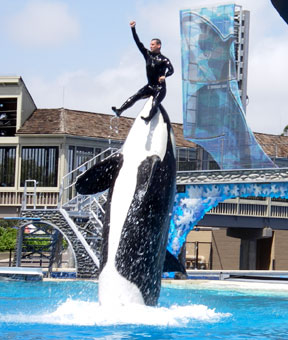Permalink for this post / Permalink for this series
Pictures of Cho Seung-Hui are now everywhere, thanks to NBC’s regretable decision to give the Virginia Tech shooter the publicity he desired. Even though I haven’t spent much time looking at them, I doubt I’ll soon forget the face of the cold-blooded murderer. I’m reminded of how I felt looking at the omipresent images of Charles Manson when I was a boy. I can’t even imagine how much additional suffering NBC has inflicted on the families and friends of the victims by parading Cho’s images before the nation. Is there no wisdom left in America? Or even shame?
 The New York Times distinguished itself by focusing our vision, not so much on the killer as on the victims. (HT: Hugh Hewitt) Seeing the faces of those who lost their lives on Monday and reading their short bios fills us with an appropriate sense of loss. I doubt I’ll soon forget the image of the collection of photos at the Times website (see image to right). Indeed, I don’t want to forget it.
The New York Times distinguished itself by focusing our vision, not so much on the killer as on the victims. (HT: Hugh Hewitt) Seeing the faces of those who lost their lives on Monday and reading their short bios fills us with an appropriate sense of loss. I doubt I’ll soon forget the image of the collection of photos at the Times website (see image to right). Indeed, I don’t want to forget it.But this not the image I most want to remember.
Other memorable images have shown the grieving students, friends, and family members of those who died in the Virginia Tech massacre. These help us to empathize with those who have lost their loved ones. They make connections of the heart in a way that words cannot. I doubt I’ll soon forget the images of the grieving people of the Virginia Tech family.
But these are also not the images I most want to remember.
The image I do want to remember is a most unspectacular one. It’s grainy and, apart from the events of this week, utterly forgettable. It’s the image of Liviu Librescu, a professor of Engineering Science and Mechanics at Virginia Tech. As I’m sure you know by now, Dr. Librescu sacrificed his life so his students could escape. As he barred the door to prevent the killer from entering his classroom, Librescu was fatally wounded. But his sacrifice allowed his students to jump from the windows, thereby preserving their lives. Were it not for the courageous actions of this one man, many more would have been murdered.
 Liviu Librescu looks very ordinary. In fact, he looks just about like a professor of engineering ought to look, if you’ll pardon my stereotype. His photo shows nothing that would suggest extraordinary bravery. It doesn’t reveal his history as a Holocaust survivor, nor his love for his students. But behind the relatively expressionless face of Dr. Librescu was a man who loved to learn, who loved his students, and who loved life so much that he was willing to offer his so others might save theirs. Ironically, I might easily forget the image of Liviu Librescu, but I hope not.
Liviu Librescu looks very ordinary. In fact, he looks just about like a professor of engineering ought to look, if you’ll pardon my stereotype. His photo shows nothing that would suggest extraordinary bravery. It doesn’t reveal his history as a Holocaust survivor, nor his love for his students. But behind the relatively expressionless face of Dr. Librescu was a man who loved to learn, who loved his students, and who loved life so much that he was willing to offer his so others might save theirs. Ironically, I might easily forget the image of Liviu Librescu, but I hope not.This is the image I most want to remember, the image of a person ordinary in appearance but extraordinary in soul, the image of a person of courage and honor, the image of someone I would like to be. Of course I hope I’m never in a place where I literally have to lay down my life for the sake of others. But, nevertheless, I want to live with such a self-giving spirit each day.
I’ve heard people speculate that it was Dr. Librescu’s experience of evil in the Holocaust, together with his experience of the sacrifice of those who helped to set him and his people free, that prepared him to offer his life last Monday. This may well be true. But I wouldn’t be surprised if this man prepared himself for the ultimate sacrifice by serving others throughout his life. One doesn’t live selfishly for 76 years only to redeem such a life by a moment of extraordinary servanthood.
So, though you and I don’t have to live through the horrors of the Holocaust, we can commit our lives to serving others, to making sacrifices for the good of others. My prayer is that the example of Liviu Librescu, and even his otherwise nondescript image, will encourage me to “present my body as a living sacrifice” each day as I seek to serve God and people (Romans 12:1).

